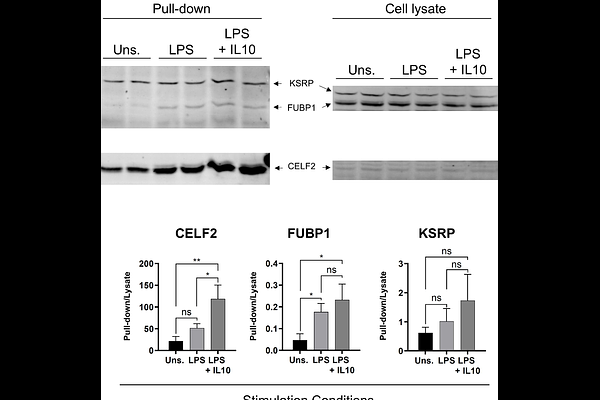The strand-selective regulation of miR-155 response to lipopolysaccharide by CELF2, FUBP1 and KSRP proteins

The strand-selective regulation of miR-155 response to lipopolysaccharide by CELF2, FUBP1 and KSRP proteins
Yoon, J. S.; Baksh, A.; Chaberlain, T. C.; Mui, A.
AbstractThe microRNA-155 exists in two forms, miR-155-5p and miR-155-3p, produced from either strand of the double-stranded precursor of miR-155. The more abundant and better-studied miR-155-5p has been implicated in many biological processes with dysregulated expression occurring in human diseases. miR-155-5p plays an essential role in supporting inflammatory responses in macrophages. Activating macro-phages with lipopolysaccharide elevates miR-155-5p, while the anti-inflammatory cytokine interleukin-10 reduces miR-155-5p levels. Recently, miR-155-3p has also been suggested to participate in macrophage function, although its specific role is unclear. We found that LPS stimulation of macrophages results first in the elevation of miR-155-3p levels, followed by an increase in miR-155-5p levels. In this paper, we explore the mechanisms involved in the maturation of the pre-miR-155 to either miR-155-5p or miR-155-3p. We describe the contribution of three RNA-binding proteins, CELF2, FUBP1 and KSRP, to pre-miR-155 processing. Our data suggests CELF2 regulates miR-155-5p/miR-155-3p strand selection. FUBP1 may support the expression of miR-155-3p for specific subcellular functions, while KSRP appears to inhibit both miR-155-5p and miR-155-3p maturation without altering the relative expression of each strand.